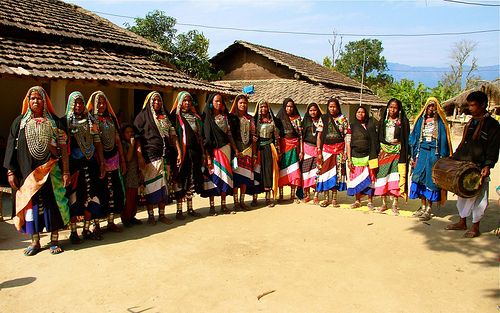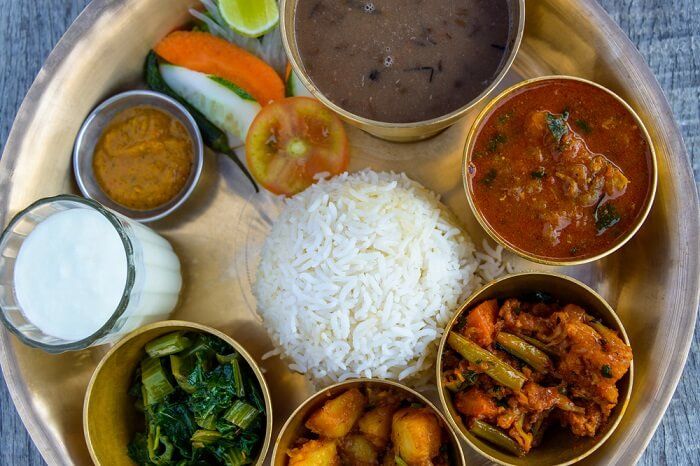Discover the Rich Culture of the Tharu People in Nepal’s Terai
At the southern plains of Nepal, known as the Terai, offer a vibrant cultural landscape shaped by the indigenous Tharu community. Unlike the soaring Himalayas, the Terai opens up with fertile fields, lush forests, and timeless villages that preserve centuries-old traditions. Tharu culture is deeply tied to the land, with unique rituals, colorful festivals, folk dances, and earthy cuisine. Travelers seeking authentic experiences beyond mountain trails will find a warm welcome here, where hospitality blends seamlessly with cultural richness. Exploring Tharu villages is more than a journey—it’s a window into a living heritage of Nepal.
Highlights of Tharu Culture & Terai Villages
- ✓ Experience traditional Tharu mud houses and rural village life.
- ✓ Witness mesmerizing Tharu stick dances and cultural performances.
- ✓ Explore Terai’s fertile landscapes, wildlife, and farming traditions.
- ✓ Taste authentic Tharu cuisine made from local harvests.
- ✓ Celebrate colorful Tharu festivals rooted in agrarian rituals.
- ✓ Stay in eco-lodges and community homestays for immersive travel.
Life in the Terai Villages
Tharu villages are renowned for their distinctive architecture—mud-plastered houses with thatched roofs, beautifully painted walls, and open courtyards where families gather. Daily life revolves around farming, fishing, and animal husbandry, with traditions handed down through generations. Walking through these villages, travelers experience Nepal’s rural authenticity: women weaving mats, children playing in fields, and farmers tending to rice paddies. The Terai’s slower pace of life offers a refreshing escape, while homestays allow visitors to live alongside locals, learning about their customs and values firsthand.

Tharu Festivals & Cultural Traditions
Festivals are central to Tharu identity, each tied to the agricultural cycle and community spirit. Maghi, the Tharu New Year, is celebrated with dancing, feasting, and rituals that honor ancestors. During Dashain and Tihar, households glow with lights and blessings, while Jitiya Parva is observed with fasting and prayers for family well-being. Folk music, stick dances (Danda Nach), and colorful costumes bring villages alive, offering travelers an unforgettable cultural immersion. These celebrations not only showcase tradition but also strengthen the bonds of community life in Nepal’s plains.
Nature & Adventure in the Terai
Beyond cultural encounters, the Terai is also home to Nepal’s most famous wildlife reserves, including Chitwan and Bardiya National Parks. Here, travelers can go on jeep safaris, canoe rides, and jungle walks to spot rhinos, elephants, gharials, and even elusive Bengal tigers. These adventures complement the cultural experience, blending nature with heritage. Staying in nearby Tharu villages enhances the journey, giving visitors both thrilling encounters with Nepal’s wildlife and peaceful evenings filled with local music and storytelling.

Flavors of Tharu Cuisine
Food is an essential way to experience Tharu culture. Traditional dishes are simple, organic, and deeply connected to the land. Must-try specialties include Dhikri (steamed rice flour dumplings), Ghonghi (river snails cooked with spices), and Bagiya (rice flour snacks). Seasonal vegetables, fresh fish, and home-brewed rice beer (Jand) complete the meals. Sharing a meal with a Tharu family offers more than just food—it’s an expression of hospitality and a cultural exchange that enriches every traveler’s journey through Nepal.
FAQ – Tharu Culture & Terai Villages
Who are the Tharu people of Nepal?
The [translate:Tharu] are an indigenous community living in Nepal’s [translate:Terai] region. They are known for their farming lifestyle, vibrant festivals, traditional dances, and unique cuisine.
Where can travelers experience Tharu culture in Nepal?
The best places are villages around [translate:Chitwan], [translate:Bardiya], and [translate:Dang], where homestays and cultural programs are available.
What is unique about Tharu architecture?
Tharu homes are eco-friendly, built with mud, clay, and thatch. Many are decorated with hand-painted motifs, reflecting artistry and sustainability.
What food should travelers try in Tharu villages?
Visitors should try dishes like [translate:Dhikri], [translate:Bagiya], and [translate:Ghonghi]. These meals are made with locally grown rice, lentils, and seasonal produce.
Can I combine cultural visits with wildlife safaris in the Terai?
Yes, most Tharu villages are near national parks, making it easy to combine cultural immersion with jungle adventures and safaris.
When is the best time to visit Tharu villages?
The ideal period is October to March, when the weather is pleasant, festivals are vibrant, and national parks offer excellent wildlife sightings.
Plan Your Nepal Adventure
A journey through Nepal isn’t complete without experiencing the heart of the Terai and the warmth of the Tharu people. From cultural performances to traditional meals and wildlife safaris, every moment in Tharu villages reveals authentic Nepal. If you’re seeking experiences that go beyond the Himalayas, where culture, adventure, and hospitality come alive, the Terai awaits you. Plan your visit today and let Namonepal.com help you explore the soulful charm of Tharu culture and villages in Nepal.
Explore More